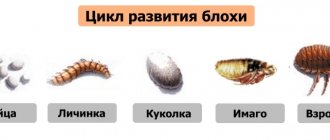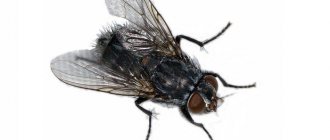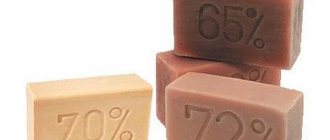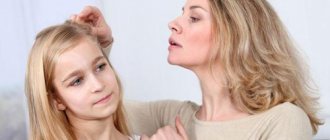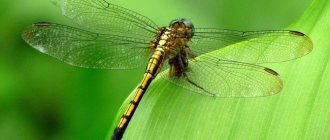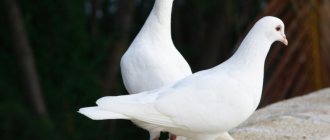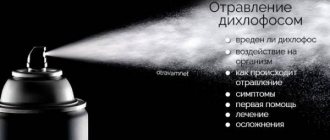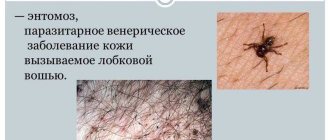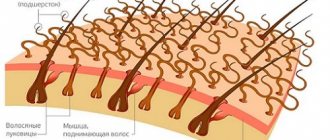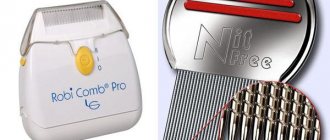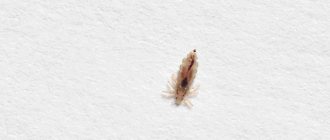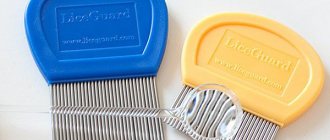- about the author
- VK profile
Svetlana Tarasova
Hairdresser-stylist with more than 8 years of experience, expert in the field of haircuts, styling, hair care, coloring.
Modern man knows and can do a lot. But he always feels bewildered and frightened when he discovers a microscopic insect that parasitizes in the hair on his head, in the groin or under the arms.
We are talking about lice - an ancient bloodsucker, a human companion . Pediculosis always appears suddenly, and it is difficult to cope with, because the louse is very prolific and moves quickly.
And in order to defeat the parasite, you need to know all the features of its existence.
How do lice reproduce on the human head? Life cycle of a parasite.
Lice are dioecious insects. Therefore, in order for offspring to appear, a male and a female are needed.
Interestingly, the parasite can reproduce before reaching adulthood, only by entering the nymph stage . Rapid reproduction occurs due to the presence of favorable conditions:
- The temperature limits of a comfortable louse habitat range from 22 to 45 degrees . Even if a person walks without a hat, the parasite is not in danger of dying, because the optimal temperature for it is 31 degrees;
- The presence of a food source in the form of blood allows the female to continually lay eggs , from which adults develop in a short time;
- Insects that can move quickly are usually localized in a small space , which allows females and males to quickly find each other for mating.
INTERESTING: There are several types of lice: head, body and pubic. The process of their reproduction can be considered identical (there are minor differences).
Life cycle of a parasite.
In science, lice are classified as insects whose life cycle is incomplete. It lacks the developmental stage of a typical larva (small worm), which differs in appearance and feeding method from the adult.
The female is capable of laying viable eggs throughout her life, mating with a male once . This happens because the male's seminal fluid fertilizes all the eggs. A female specimen, having landed on a person’s hair, immediately begins to feed and reproduce.
REFERENCE: A hair louse lays 4 eggs daily (140 per life cycle), a body louse – 10 (300 per life cycle), a pubic louse – 1-2 (up to 60 nits).
The life cycle begins immediately after the louse lays eggs and includes several stages.
Egg development stage
In the process of laying eggs, specific mucus first comes out of the louse’s genitals, and then an egg, which is gradually attached to the hair with a hardening viscous secretion at a distance of 0.5-1 cm from the surface of the head and rises along it as development progresses. The egg has very strong walls and is called a nit. It is impossible to shake it off due to its strong fixation; special combs or manually “pulling” the nit from the hair will help.
INTERESTING: The nit resembles a piece of dead skin of white or light gray color. But when examined under a microscope, it becomes clear that, rather, it resembles a bag-like handbag that holds tightly to a hair.
The insect develops in the shell for 8 days, after which it chews the wall, but cannot get out. Nature has prepared an interesting way of survival for this case: the parasite begins to actively inhale air and release carbon dioxide, which accumulates at the bottom of a kind of capsule. This leads to the expulsion of the individual from the egg. As soon as it gets on the skin, it begins to actively feed and sheds for the first time.
The first instar nymph appears (size 1.5 mm). This process takes approximately 2 days.
REFERENCE: Zoologists call a nymph a young insect that closely resembles an adult insect, but is distinguished by its smaller size, the strength of its chitinous cover and its transparent gray color. Nymphs molt three times, each time growing out of the chitinous cover and shedding it when the soft body grows.
Stage of development of the first instar nymph
The development period of the nymph is 5 days . The nymph grows, feeds, and is capable of reproducing. Its size is 1.5-1.75 mm.
Stage of development of the second instar nymph
Lasts 8 days and ends with the appearance of an adult louse (size 2-3.6 mm), capable of living from 30 to 42 days.
The growth cycle of a louse thus includes the development of the nit and the nymph's three-time molt. It is fleeting and can only be slowed down when the temperature drops sharply. Typically, the full life cycle takes place on the body of one carrier within 16 days.
Minimum and maximum hatching
As you already understand, the incubation period is the time of development from the egg to the larva that emerges from it. On average it lasts from 5 to 8 days. Temperature has a strong influence on the rate of egg development .
The shortest incubation period will be at average air humidity and a temperature of about 30 degrees. If the temperature is higher or lower than specified, the egg development time increases. At temperatures above 40 and below 22 degrees, the eggs die and the larvae will not be born.
How quickly do head lice multiply after infection in a child and an adult?
There are medical statistics that determine the risk groups of people who most often become infected with pediculosis (lice):
- Group 1: adolescents and young adults aged 14 to 25 years (every sixth person becomes infected);
- Group 2: children under 14 years of age;
- Group 3: people aged 35 years and older (least exposed to the disease).
The life cycle of the parasite occurs in both children and adults in the same way - in 16 days . But, unlike adults, children quickly respond to the appearance of lice: they begin to sleep poorly, scratch their heads, infection can be introduced into the wounds, and immunity decreases.
How many days does it take for a lice to lay its first eggs?
Eggs can be laid both by mature insects that came from another host, and by young individuals that have undergone a life cycle on an infected person.
- As soon as a louse appears on the human body, it begins to feed and lay eggs . By the location of the nit on the hair, you can determine the period of infection and the beginning of egg laying;
- The first instar nymph is capable of mating and laying nits . This means that after 8-10 days from the day of her birth, a new portion of developing parasites will appear;
- After 16 days, a sexually mature individual develops from the nit, capable of laying eggs itself.
If an adult louse on the human body is in comfortable conditions, then the process of formation of new individuals goes on without stopping. And after 30 days the number of parasites will increase exponentially.
What are the dangers of untimely treatment?
Treatment of pediculosis
One of the most common negative aspects is infectious infection - if treatment is delayed, then when combing your hair every day, small open wounds appear, where various infections can subsequently get into.
The wounds can fester, which leads to fever and enlarged lymph nodes, which leads to the need to take antibiotics.
The most dangerous complication, which can lead to death, is epidemic typhus, which promises damage to the nervous and cardiovascular systems, as well as death. Lice can carry this dangerous disease, which enters the bloodstream along with lice secretions through damaged areas of the skin.
Frequently asked questions about lice
Expert opinion
Alexandra Valerievna
Doctor-Trichologist
How does the mating process occur?
The male's genital opening is located at the top behind the anus, and the female, in addition to the ovaries and oviducts, has a spermatic receptacle and a vagina. The mating process lasts from 20 to 70 minutes and can occur at any time . During mating, the male holds the female tightly with a claw-like outgrowth. The male's seminal fluid fertilizes the eggs, which can be viable for 7-12 days in the hair louse, and 15-20 days in the body louse. The formation of parasite eggs occurs in the egg tubes, where they are covered with a dense membrane.
What appears first: a louse or a nit?
There is an opinion that lice can appear from nits that come out from under the skin. But this is an erroneous point of view, because nits are lice eggs. Being a maternal individual, the female parasite goes through the stage of mating, fertilization and the birth of a new individual.
Yes, it may be that a person does not have lice, but does have nits. But this can only be explained by the following:
- either a lice infestation was observed, and the treatment was not effective : the lice were exterminated, but there were no nits, since their chitinous layer did not allow insecticides to pass through;
- or the conditions for the development of the louse’s life cycle were unfavorable , the nit was in a dormant state, and the adult died or moved to another host.
What are the differences between a male and a female?
Parasites are classified into both female and male individuals. Moreover, the number of females exceeds the number of males, according to scientists, to maintain the population size.
Females and males have both external and internal differences:
| Body structure | Females | Males |
| External features | Larger size (up to 4 mm), abdomen forked at the end, spurs on the hind legs | The size is smaller than that of the female (up to 3 mm), rounded abdomen, claw-like outgrowths on the front legs |
| Internal Features | In the transparent abdomen, spherical nits are clearly visible, | Copulatory organ visible |
It is best to examine the internal genital organs of lice under a microscope.
How long do they live?
The lifespan of lice is highly dependent on environmental conditions and the availability of fresh blood. The optimal temperature for parasites is +28… +30⁰С. While on the body of a healthy person, lice actively reproduce and spread (over the entire surface of the head, if we are talking about head parasites, or along the pubic area, if we are talking about pubic lice).
If the temperature rises to +39⁰C, the insects begin to experience discomfort and tend to leave the victim’s body. The same thing happens if the temperature starts to drop. A louse can live no more than 2-3 days without food.
Life cycle
The age limit to which a parasite can live depends on its variety. Long-lived body lice are considered to live for 2 months. Head parasites usually live 35–45 days, while pubic parasites rarely live longer than a month.
Where can infection come from?
A louse is a parasitic insect belonging to the phylum arthropod. She cannot fly, jump or swim, but she moves very quickly (about 30 cm per minute). Therefore, one of the most common ways of contracting head lice is through head-to-head contact with a patient.
Head lice most often affects children and adolescents from 4 to 14 years of age (girls with long hair), who have been in contact with each other for a long time in kindergarten, school or children's health camp. The cause of lice infection can be the use of someone else's comb, headdress, towel or pillow.
INTERESTING: You can “catch” a head louse in dubious hotels (bed linen), swimming pools (swimming caps and other people’s towels) and hairdressers, where sanitary standards are not met.
Pediculosis pubis is transmitted through sexual contact, during which the louse has the opportunity to climb from one person to another and lay eggs.
Body lice, like head lice, is transmitted from a sick person to a healthy person through close contact and the use of other people's things.
Symptoms of lice
Depending on the type of lice, there are different types of lice and therefore different symptoms of the disease.
Symptoms of head lice:
- Itching of the scalp, less often the ears and neck;
- Yellow scabs appear at the bite sites and the hair follicles become noticeably inflamed;
- With advanced lice, lumps of unkempt hair form, glued together with pus from the wounds;
- When examining the head on the hair, you can notice white or yellowish eggs laid by lice; when crushed, they click; empty eggs are gray in color;
- Lymph nodes near the ears and neck may become inflamed.
Symptoms of body lice:
- Affected areas are shoulders, armpits, back, neck, abdomen, lower back, groin, back and inner thighs;
- Lice bites look like mosquito bites, but with a dark dot in the center; as the affected area increases, the bites acquire a blue tint and can fester;
- When the condition is neglected, the bites become brown in color, the skin at the site of the lesion thickens, and scars appear in place of the abscesses;
- The patient's temperature rises, fever, weakness, nausea and headache appear.
Symptoms of lice pubis (phthiriasis):
- Affected areas are the genitals, anus, armpit hair, eyelashes and eyebrows;
- Slight itching, not causing concern. Itching is often accompanied by burning of the mucous membranes of the genital organs;
- When eyelashes and eyebrows are affected, unpleasant sensations appear on the mucous membrane of the eye and around it. Nits are usually located along the length of the eyelash closer to the eyelid.
The symptoms will help determine what type of lice is infested. After which it will be possible to use effective means to combat parasites.
Types of lice
The following types of lice can attack people:
- head lice;
- body lice;
- pubic lice (pubic lice).
Lice bites are accompanied by severe itching, which results in severe scratching. In addition, there is a high probability of the spread of dangerous infections.
Methods of getting rid of the parasite
When symptoms of lice appear, you need to find out the level of lice infestation. He can be
- Low: several nits and lice detected;
- High: nits hang in clusters on the hair, the movement of lice on the scalp, forehead, ears, eyebrows is noticeable.
After this, you should choose the most effective way to combat the parasite.
There are several methods for treating head lice:
- Radical – cutting the head bald, completely removing hair from the scalp. Lice will not be able to lay eggs on hair less than 3-4 mm in height. The method is truly radical, because in one day it is possible to get rid of the parasite at any degree of lice infestation. But not everyone accepts it, because they are not ready to part with their hair for a while.
- Mechanical – manual selection of nits from hair and capture of adult individuals. Can be used for small numbers of parasites. In this case, the head is washed (the lice will become inactive for a short time), a special comb is taken, with which the wet hair is divided into very thin strands. Each hair in the strand is examined, and the detected nit is pulled off. As the head is examined, lice are caught. The procedure is best carried out on a white cloth (if the parasite gets on it, it can be easily detected and destroyed) or in the bathroom (it’s easier to wash the lice down the drain). You should perform this inspection several times during the day, and be sure to wash your hair in the evening. If possible, repeat mechanical lice catching for several days. Bed linen is boiled, combs need to be replaced.
- The use of folk remedies in the fight against the parasite is not always effective, but it can be due to its low toxicity to the human body:
- Herbal decoctions wormwood, mint, wild rosemary, hellebore root, chopped garlic are rubbed into the scalp. Lice cannot stand the smell of lavender and tea tree oil and should be rubbed into the skin and hair.
- Kerosene has been used for decades. But it can cause a burn or an allergic reaction.
There is a safe recipe: apply a mixture of:
- 1 tbsp. kerosene,
- 2 tsp vegetable (preferably olive) oil,
- 1 tsp shampoo.
The head is covered with a plastic bag and a towel for 2 hours, then washed with warm water and shampoo, rinsed with a light vinegar solution. Nits and lice are combed out when the hair is dry.
The procedure can be repeated after 2 days, but the concentration of kerosene is reduced.
Vinegar is not used to kill lice, but to neutralize the secretion that attaches nits to the hair . For the procedure, a water-vinegar solution (2/1) is applied, in which the hair is well wetted. The vinegar concentration is no more than 9%. After this, the head is tied with a plastic bag for 1 hour, washed with shampoo and dried. Next, nits and lice are mechanically removed and combed out with a special comb.
Use of Pharmaceuticals
In modern pharmacology, there is a wide range of drugs that can very quickly cope with pediculosis, affecting the nervous system of the parasite or blocking their access to air and fluid. The method of use of each product is specified in the accompanying instructions.
Main types of funds:
- Sprays (Pedikulen, Paranit, Para Plus, Pediculen Ultra (in case of severe infection) are easy to use, applied to dry hair, but are ineffective in killing nits;
- Shampoos (Pedilin, Anti-bit, Reed, Paranix, Sifax, tar) allow you to get rid of parasites in one go, applied to damp hair for 30 minutes, after which the head is washed with regular shampoo, and nits and lice are combed out.
- Emulsion Benzyl benzoate 20% – for adults, 10% – for children over 5 years old. It has an unpleasant smell, but is cheap.
- Ointments (Permethrin-cream, Lauri, Nix, Medifox, sulfur, sulfur-mercury, boric) are rubbed into the skin, can cause an allergic reaction, and are contraindicated for pregnant and lactating women and infants.
- Solutions (Nittifor)
The use of various methods and means in the fight against lice should depend on the individual characteristics of the infected person.
Prevention of head lice
Prevention of pediculosis consists of following a set of rules that prevent the occurrence of the disease and eliminate the risks of infection. By following anti-pediculosis rules, you can protect yourself from re-infection. There are sanitary and hygienic rules and norms for reasonable, healthy communication between a person and other people:
Sanitation after infection:
- After treating the infected surface with insecticides, dead nits and lice are combed out with a comb. A week later the procedure is repeated.
- Things, bedding, and personal hygiene items of an infected person and his family members are thoroughly processed.
- Once every 1-3 days, the head of not only the infected person, but also those who live next to him is examined.
Maintaining personal hygiene rules:
- Shower and wash your hair every other day or every day;
- Baths with essential oils and hair masks (mainly citrus or pine oils);
- Frequent changes of clothes and underwear;
- Washing and ironing clothes;
- Twice change of bed linen and towels per week;
- Careful hair care: frequent combing, washing the comb once every 2 days, changing it once a month;
- Prohibition on the use by other people of personal items (washcloths, towels, combs, hair ties, hairpins, headbands, headbands), outerwear and hats;
- Cleaning, washing or dry cleaning outerwear at least once a season;
- Regular wet cleaning of housing, ventilation, chemical treatment of upholstered furniture;
- In trains, motels, hotels, use of personal bedding;
- In swimming pools, baths, saunas, use your own caps.
Do you practice good hygiene to prevent lice?
Not really
Thoughtful and balanced communication with people:
- Stopping close contact with people living in unsanitary conditions and with strangers;
- Avoid casual sexual contact.
If lice do appear, do not panic. It's the 21st century! In any pharmacy you will find a lot of medicines that can remove unwanted guests. But to prevent them from appearing again, you need to follow the rules of personal hygiene and carefully examine the hair of your loved ones from time to time.
- about the author
- VK profile
